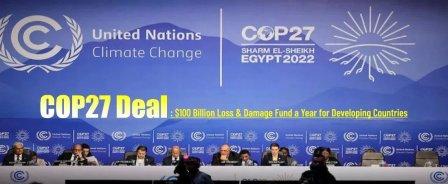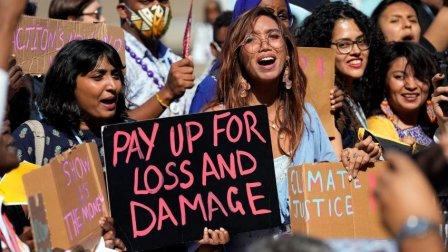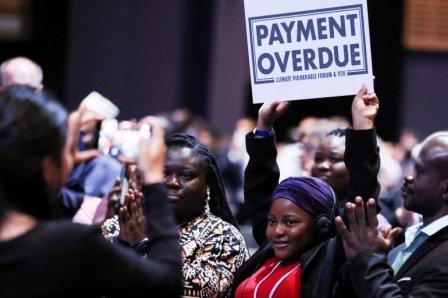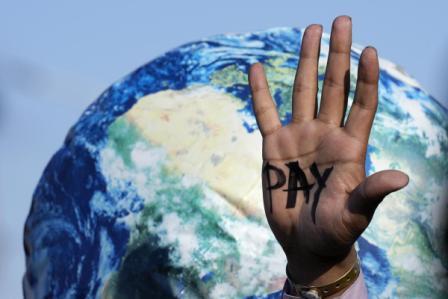

It seems that Climate Change is now gaining real traction and importance for the common people more and more, but our politicians are not ready to take any notice of these changes, which are going to have immeasurable negative impact on the lives of billions of people across the globe.
Besides calls for wealthier nations to provide compensation to underdeveloped countries to cover the costs of severe damage and losses, citizens of some countries have also initiated legal proceedings against their governments for inadequately addressing the climate change fallouts.
 The month of November saw two environment-related incidents taking place. First, at the latest COP summit at Sharm El Shiekh in Egypt, termed as ‘Africa’s COP’, the voice of the most-vulnerable and most-affected countries was heard with an agreement to establish a loss and damage facility.
The month of November saw two environment-related incidents taking place. First, at the latest COP summit at Sharm El Shiekh in Egypt, termed as ‘Africa’s COP’, the voice of the most-vulnerable and most-affected countries was heard with an agreement to establish a loss and damage facility.
However, progress is still snail-paced in terms of raising ambitions to curb greenhouse gas emissions. Leaders attempted to keep that goal alive at the Egypt conference, but did not increase calls to reduce carbon emissions.
November also saw hundreds of activists, including Greta Thunberg, marching through the streets of Stockholm to a court to file a lawsuit against the Swedish government for what they claim is insufficient climate action.
Lawsuit by Swedish citizens
Over 600 young activists signed an 87-page document, which would serve as the foundation for the lawsuit, which was filed in the Stockholm District Court.
 They want the court to rule that the country’s climate policies violate the human rights of its citizens. According to Anton Foley, spokesman for the youth-led initiative Aurora, which prepared and filed the lawsuit, Sweden has never treated the climate crisis as a crisis. Sweden is failing to fulfil its responsibilities and is breaking the law.
They want the court to rule that the country’s climate policies violate the human rights of its citizens. According to Anton Foley, spokesman for the youth-led initiative Aurora, which prepared and filed the lawsuit, Sweden has never treated the climate crisis as a crisis. Sweden is failing to fulfil its responsibilities and is breaking the law.
Earlier, in one of the most high-profile cases, Germany’s highest court ruled last year that the government’s climate targets must be adjusted to avoid undue burden on the young.
The German government responded by pushing back its target for net zero emissions by five years to 2045 and laying out more ambitious near and medium-term steps to achieve that goal.
What emerges from this is that people all across the world are increasingly becoming aware of the damages wrought by the Climate Change, and also understanding that who is the main culprit for unleashing this catastrophe, in pursuance of greed and lucre.
What is loss and damage?
The Alliance of Small Island States at international climate negotiations in Geneva in 1991, first introduced theconcept of loss and damage, but it was not seriously considered again until 2013 at the COP-19 climate conference in Warsaw, Poland.
The Warsaw International Mechanism for Loss and Damage was created with the aim of enhancing knowledge of the issue and finding ways to approach it. There has been little progress since then.

The Glasgow COP, last year rejected a proposal made by members of the G-77 group of over a hundred developing countries and China for a formal loss and damage financial facility. Instead, in a bureaucratic manner, the Glasgow Dialogue was established for further discussion on the issue and it’s funding.
Critics have described the dialogue as “an excuse to delay further action.” It seems as if the rich countries are dragging their feet on financing any such endeavour.
While historically, between 1751 and 2017, the United States, the European countries and the UK were responsible for 47% of cumulative carbon dioxide emissions, as compared to just 6% from the entire African and South American continents. Yet, the culprits have been slow to make financial contributions to ease the impact on the most affected countries.
In 2010, Global North nations agreed to pledge $100 billion (€101 billion) annually by 2020 to help developing countries adapt to the impacts of climate change.
But according to the Organisation for Economic Cooperation and Development (OECD), which tracks funding, in 2020 wealthy countries pledged just over $83 billion. That was a 4% increase on the previous year, but it still falls short of the agreed amount.
What’s the impediment?
Though in principle, developed nations acknowledge the need to address loss and damage, some amongst them argue for financing through existing climate funds, insurance schemes and humanitarian aid. Their reluctance is reflected in the European Union’s briefing, for example, which said that it was “open to discussing L&D (loss and damage) as a topic but hesitant about creating a dedicated L&D fund.”

Former British PM and WHO ambassador for global health financing, Gordon Brown has realistically opined that the announcement of the new initiative – the global loss and damage fund – to right historical wrongs by compensating climate-hit developing countries, might be a good feel factor but the real question is whether the developed world will really loosen its purse strings?
This breakthrough, he says, brought back memories of another initiative, the £100 billion a year agreed at the 2009 Copenhagen climate summit to help poor countries mitigate the effects of the climate crisis.
Brown says further that that money has never fully materialised. If 13 years’ experience of the £100 billion fund that never was is anything to go by, eulogies of praise will soon turn into allegations of betrayal. Far from the loss and damage fund narrowing the credibility gap on climate action, it is likely to bridge nothing if money fails to flow from rich to poor.

What is needed, however, is not less but more aid to help developing countries tackle the dramatic consequences of an unprecedented series of crises. Indeed, developing countries, unlike advanced economies, had no fiscal, monetary, or social space at the onset of these crises, to raise the issue.
One key priority for the global community should be not only to increase aid but also to make it much greener to help developing countries tackle the challenge of climate adaptation in an effective manner. Green aid encompasses financial and technical assistance to governments and direct investments in projects in both mitigation and adaptation to climate change. ![]()
___________
Also Read:
Centre’s Opaque Auction Rules For Pulses Rip Off Govt Coffers, Help Millers Strike Rich
Need to amend laws like UAPA to provide for punishment for those who slap false cases
Global Arms Trade: Who are the real winners?
Why not 40 pc tickets for women in Punjab and elsewhere?
Punjab – How a deadly cocktail of Agri-Water-Energy nexus going to destroy it?
North Pole and the ideological conflict of RSS & Hindutva
Politics of Symbolism: Dalit Chief Ministers in India

Disclaimer : PunjabTodayTV.com and other platforms of the Punjab Today group strive to include views and opinions from across the entire spectrum, but by no means do we agree with everything we publish. Our efforts and editorial choices consistently underscore our authors’ right to the freedom of speech. However, it should be clear to all readers that individual authors are responsible for the information, ideas or opinions in their articles, and very often, these do not reflect the views of PunjabTodayTV.com or other platforms of the group. Punjab Today does not assume any responsibility or liability for the views of authors whose work appears here.
Punjab Today believes in serious, engaging, narrative journalism at a time when mainstream media houses seem to have given up on long-form writing and news television has blurred or altogether erased the lines between news and slapstick entertainment. We at Punjab Today believe that readers such as yourself appreciate cerebral journalism, and would like you to hold us against the best international industry standards. Brickbats are welcome even more than bouquets, though an occasional pat on the back is always encouraging. Good journalism can be a lifeline in these uncertain times worldwide. You can support us in myriad ways. To begin with, by spreading word about us and forwarding this reportage. Stay engaged.
— Team PT


Copyright © Punjab Today TV : All right Reserve 2016 - 2024 |